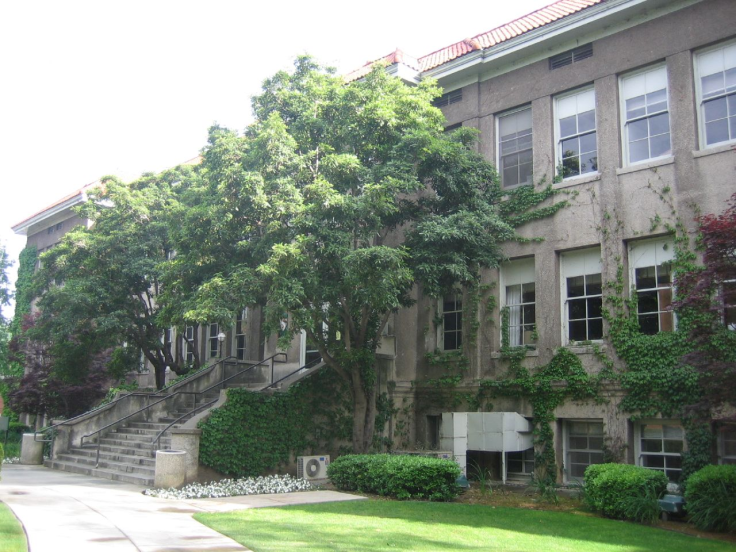University of La Verne President Resigns After Less Than a Year on the Job Amid Enrollment Decline
ByThe abrupt resignation of Pardis Mahdavi, president of the University of La Verne, has sparked conversations about the institution's future and the broader implications of leadership turnover.
Serving only ten months before stepping down due to "personal reasons," Mahdavi's departure has left a void in the university's administration. The circumstances surrounding her exit, juxtaposed with the stable tenure of her predecessor, Devorah Lieberman, who served for 12 years, have raised significant concerns among faculty and students.

A Brief Tenure Amidst High Hopes
Mahdavi's presidency at La Verne began with high expectations. Her predecessor, Lieberman, had established a solid foundation over her lengthy term, and Mahdavi was seen as a dynamic leader poised to usher in new changes. However, her short stint was marked by perceived limitations on her authority. Lieberman's continued presence at the university on a one-year advisory contract led some faculty members to believe that Mahdavi was not given the autonomy necessary to implement her vision fully. Faculty Senate President Paul Alvarez voiced this sentiment, expressing disappointment that an opportunity for substantial change had slipped away.
This notion of restricted agency highlights a significant challenge in leadership transitions, especially in academic institutions where former leaders often remain influential. The delicate balance between providing support to new leaders and allowing them enough freedom to innovate is crucial. The perceived interference or overshadowing by previous administrations can undermine the confidence and effectiveness of new leadership, as appears to have been the case with Mahdavi.
Enrollment Challenges and Strategic Directions
Compounding the leadership concerns, La Verne has been grappling with declining enrollment numbers. The university enrolled 5,662 students in fall 2022, a stark contrast to the 8,000-plus students it boasted for much of the 2010s. This decline mirrors a broader trend affecting many higher education institutions, driven by changing demographics, economic pressures, and evolving student preferences.
Mahdavi's brief tenure did not afford her the time to address these deep-rooted challenges adequately. However, her departure raises questions about the strategic direction La Verne will take to combat these enrollment issues. Mark Hicks, a Board of Trustees member now serving as acting president, has emphasized continuity, pledging to support the initiatives Mahdavi began. Nevertheless, the university's ability to stabilize and reverse its enrollment decline will likely depend on the next interim president's vision and the eventual appointment of a long-term leader.
Addressing enrollment challenges requires a multi-faceted approach, including revisiting recruitment strategies, enhancing student support services, and possibly expanding program offerings to align with current market demands. As the university navigates this transitional period, these strategic decisions will be critical in ensuring its future viability.
Administrative Stability and Future Prospects
The University of La Verne's recent history of administrative turnover has not gone unnoticed. The Western Association of Schools and Colleges, the university's accreditor, highlighted concerns about leadership stability in a report last year. This spotlight on administrative consistency underscores the importance of having a steady leadership team to navigate the complexities of higher education management.
With Mark Hicks stepping in as acting president, the immediate task at hand is to provide stability and reassure the university community. His commitment to continuing the collaborative efforts initiated by Mahdavi is a positive signal, but long-term stability will hinge on the selection of a suitable interim president and, ultimately, a permanent leader who can inspire confidence and drive the university forward.
Finding new leadership poses both difficulties and chances for advancement. It is an opportunity to find a leader who can build on the strengths of past administrations while introducing innovative strategies to address current issues. However, the process must be conducted with transparency and inclusivity to ensure that the selected leader has the full support of the university community.
The University of La Verne is at a critical juncture. The resignation of Pardis Mahdavi after less than a year in office, combined with declining enrollment and administrative turnover, poses significant challenges. However, with careful and strategic leadership selection, the university can navigate this transitional period and emerge stronger. The commitment to maintaining momentum and addressing core issues will be essential in securing La Verne's future as a vibrant academic institution.
© 2025 University Herald, All rights reserved. Do not reproduce without permission.








